C.M. Saunders's Blog
October 13, 2025
RetView #85 – The Orphanage (2007)
Title: The Orphanage (El Orfanato)
Year of Release: 2007
Director: JA Bayona
Length: 97 mins
Starring: Belén Rueda, Fernando Cayo, Roger Príncep, Mabel Rivera, Montserrat Carulla
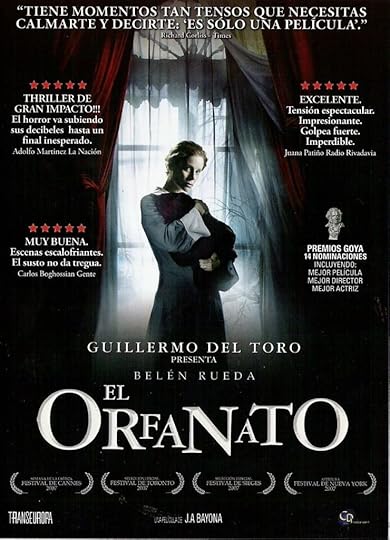
This acclaimed co-production between Spain and Mexico is the long-form directorial debut of Barcelona-based director JA Bayona, who went on to direct Jurassic World: Fallen Kingdom (2018) and Society of the Snow (2023), which told the story of the Uruguayan rugby team whose plane crashed in the Andes in 1972. Short on both money and experience, for Orfanato, Bayona enlisted the help of Mexican horror legend Guillermo del Toro Gomez, perhaps best known Mimic (1997), The Shape of the Water (2017) and Scary Stories to Tell in the Dark (2019). It’s also the first screenplay by Sergio G Sanchez, who was heavily influenced by the classic literature Turn of the Screw by Henry James and Peter Pan by J.M. Barrie, as well as horror movies like The Innocents (1961), The Omen (1976) and Poltergeist (1982). The work was nominated for Best Screenplay at the 2008 Goya Awards after being nominated for no fewer than 14.
The Orphanage opens with some kids playing a game, but you just know things won’t stay this innocent long, in more ways than one. One of these kids is Laura (Rueda) who is adopted only to return to the now-abandoned building thirty years later with her husband (Cayo) and son, Simon (Príncep), with the altruistic intention of turning it into a home for disabled children. Soon after they move in, Simon, who is both adopted and HIV-positive but doesn’t know either (which is certain to make for some pretty awkward family chats at some point) soon starts making friends, kind of unusual given that the place was deserted when they moved in, and starts saying off-kilter things like, “I’m not going to grow up. Like my new friends.” He now has six of these invisible playmates, by the way. He talks about a treasure hunt, presents a box of teeth as a ‘clue,’ and claims that if he finds the treasure he will be granted a wish. He has also taken to drawing creepy pictures of a child with a cloth sack over his head, another massive red flag. Don’t the kids in these films always do stuff like that? By now, it’s pretty clear the old orphanage is haunted and the spirits are exerting their influence on poor Simon. The question now becomes why? Because there is always a ‘why.’ Things are compounded by a visit from a social worker called Benigna (Carulla) who is later spotted acting suspiciously in the grounds. As things escalate, Laura becomes increasingly concerned, and then frantic with worry. All of which seems entirely justified when Simon disappears, driving a wedge between Laura and her husband. This leads to a series of strange discoveries, and as the secret of the orphanage is slowly revealed it turns out Simon is neither the first nor the only child to go missing.
The gothic mansion (the Partarriu Manor) where most of the action takes place is very impressive (pictured below), and some of the cinematography truly stunning. Despite being filmed on location in Llanes, northern Spain, there is a lot of torrential rain (rain in Spain?) and it’s overcast most of the time, which all adds to the menacing mood. The location was chosen due to its diverse natural settings, which Bayona made full use of. It was made in 2007, but looks and feels a lot older. Maybe that was the intention. In 2007 New Line Cinema bought the rights for an English-language remake but that seems to have stalled, and there have been crickets ever since. On this, Bayona noted, “The Americans have all the money in the world but can’t do anything, while we can do whatever we want but don’t have the money,” whilst also pointing out that the American industry doesn’t take chances, and prefers to remake movies that were already hits.

The Orphanage reportedly received a standing ovation at the Cannes Film Festival, and when it was released in cinemas became the second highest grossing debut ever for a Spanish film. It was also a hit with international audiences. At the time of writing the film has an 87% approval rating on review aggregate site Rotten Tomatoes based on 181 reviews, with an average rating of 7.4/10. The critical consensus reads, “Deeply unnerving and surprisingly poignant, The Orphanage is an atmospheric, beautifully crafted haunted house horror film that earns scares with a minimum of blood.” Pulitzer Prize winning film critic Roger Ebert said the film is “deliberately aimed at viewers with developed attention spans. It lingers to create atmosphere, a sense of place, a sympathy with the characters, instead of rushing into cheap thrills.” A more contemporary review in The Film Magazine says: “The Orphanage might be one the most moving ghost stories ever put to film, and throughout its deliberate, slow-burn telling of a pitch-black gothic mystery it never loses touch with its beating heart. It’s about lost, forgotten, mistreated children and how pain can be passed on decades down the line, but ultimately also that love, care and kindness saves lives and prevents the next generation being both metaphorically and literally haunted.”
On the negative side, the film drew criticism for its ending and several reviewers picked up on the fact that at its core the film is about grief and the mental toll it takes, with some suggesting it is a depiction of a bereaved parent’s slow descent into madness drawing comparisons with The Babadook (2014). Tellingly, this is never definitively addressed.
Trivia Corner:
Though uncredited, Guillermo del Toro Gomez plays the doctor at the Emergency Ward who treats Laura after she injures her leg looking for Simon.
September 21, 2025
Girl’s Night
Happy to report that my drabble, Girl’s Night, has been included in the latest edition of Flash Phantoms ezine.

I do love a good drabble, and there’s a lot going on in this one. I was determined to stick to my usual modus operandi of lulling the reader into a false sense of security before hitting them with a gut punch at the end, but it’s a lot more difficult to achieve when you only have 100 words to play with.
Still, mission accomplished. I think.
Girl’s Night is free to read HERE.
September 12, 2025
Night Birds by Christopher Golden (a review)
I love horror stories set on boats or in secluded cabins deep in the woods. Or, absolute best case scenario, a cabin on a boat. I don’t know why. Must be the sense of isolation. Here, I got exactly what I wanted, even if the boat in question is moored and now functions as a kind of research facility. In his work for the Texas Parks and Wildlife Department, Charlie Book has been living aboard and studying the Christabel, a 19th century freighter that lies half-sunken off the coast of Galveston, which now houses a mangrove forest complete with snakes, crabs, and other wildlife. After overcoming tragedy, everything seems to be going well in Book’s life. Right up to the point his ex Ruby shows up with another woman and a baby in tow begging for shelter from an approaching storm, both literal and figurative. Book is naturally wary at first, especially when tall tales of witches, covens, and magic abound. But soon old feelings resurface and he sees an unlikely shot at redemption, if he can only make it through the night alive. But when he realises what he is up against, that might be more difficult than he first imagined.

Apart from the unique setting, I thought one of the strengths of this atmospheric horror thriller is its relentless pace and the revelations (along with the action) come thick and fast. Though the story is certainly fantastical, it somehow manages to retain an element of realism and the characters are fleshed out and relatable, though not to the point that they become overbearing. That said, several of the secondary characters did have very similar traits and it was easy to lose track of them, especially when the story raced toward its climax. My main complaint however, and I realise this might be considered peak pedantry, is the MC’s name. Reading a book about a man called Book just didn’t sit right, especially when he talks about books.
Admittedly, I think this is the first Christopher Golden novel I have read so I am not overly familiar with his style, summarised by one source as being “characterised by a blend of immersive horror, compelling character development, and brisk pacing, often exploring themes of folklore, mythology, and human nature.”
But it probably won’t be the last.
Night Birds is available in paperback and eBook formats on Titan Books from 18 September 2025. You canalso catch Christopher Golden on tour with Tim Lebbon throughout the UK.
August 30, 2025
Bruce Blogs #5 – Born to Run @ 50.
I thought after my rant against Tracks II a while back, I should redress the balance by writing something to celebrate one of the greatest albums ever made hitting fifty. Yes, fifty. That’s fifty years. The Bruce Springsteen’s seminal third album was released worldwide on 25 August 1975, and to celebrate the auspicious occasion I have been spinning it a lot this week. Or whatever the correct terminology is when applied to MP3 files. It’s not my favourite album by any means. It’s not even my favourite Bruce album (that honour will always go to Darkness on the Edge of Town). But Born to Run is undeniably brilliant. From start to finish it’s a journey, evoking cinematic landscapes signposted by teen angst, lost love, gang violence, and above all, that sense of frustration and crushing isolation that so often haunts people from small towns. At its core, it’s an album of hope and inspiration, which may help explain why it resonated so widely and with so many.
In hindsight, this album was Springsteen’s sliding doors moment. Having been signed by Columbia Records as a Bob Dylan clone in 1972, his first pair of albums (Greetings from Asbury Park, and The Wild, the Innocent, & The E Street Shuffle) didn’t exactly set the world alight. With the record company expecting a return on their investment, this third effort probably represented his last shot at stardom. And he knew it. Born to Run took 14 months to record, which was practically unheard of in the Seventies when most major label artists were putting out two albums a year. The title track alone reputedly took six months to perfect, with the Boss famously complaining that he heard sounds in his head that he couldn’t replicate in the studio. It was produced by Springsteen himself, aided by current manager Mike Appel and future manager Jon Landau, who tied themselves (and each other) in knots trying to capture something akin to Phil Spector’s legendary ‘Wall of Sound.’ The tensions led to a lot of soul searching, some very awkward conversations, and ultimately several departures with David Sancious and Ernest Carter being replaced in the E Street band by Roy Bittan and Mighty Max Weinberg on piano and drums respectively. Appel himself would soon be on the way out himself, which led to a lengthy legal battle which finally ended with Springsteen buying himself out of his own contract.
So what about the music? Well, you should already know all about that but if you don’t, here we go. Eight tracks totalling just shy of forty minutes kicking off with Thunder Road, one of the most recognisable songs in the Springsteen arsenal. With it’s haunting harmonica and piano, it’s a slightly understated introduction, before the balance is redressed with the punchy one-two combo of Tenth Avenue Freeze Out and Night. The ‘wall of sound’ production is already in evidence, but really comes into its own with the climax of the epic Backstreets which rounds out side one of the vinyl and cassette. I mention this because more than one critic has pointed out how vital the sequencing was, with its ‘four corners’ approach meaning each side of the recording starts on an uplifting, optimistic tone before sinking into lyrical drudgery and fraught pessimism, with lyrics touching on fear, betrayal, revenge, and violence. This concept is never more evident than when ‘side two’ kicks off with the immortal Born to Run, which perfectly encapsulates that sense of missing out that we all felt as teenagers, the unshakable belief that everything was happening somewhere else and all you had to do was get there. This is followed by She’s the One, a song about romantic obsession, and the album closes with Meeting Across the River and the immortal Jungleland, two similarly-themed tracks about the darker side of the American Dream with the latter weighing in at over nine minutes and featuring a timeless extended sax solo from Clarence Clemons.

Though not officially a concept album, it has been said many times that Born to Run has a very cinematic feel, with each track hitting like a mini opera, or a vignette attached to a broader work. Several critics have pointed out that the album is driven by actions, such as running, meeting, hiding and riving. These characters are in perpetual motion, if not literally then figuratively. It is indeed a journey for the listener from start to finish, the road possessing the ability to ‘take you anywhere’ and therefore offering a means of escape. There is a feeling that the highway offers a sense of hope or even belonging, and it becomes a metaphor for everything missing in the narrator’s life. Springsteen himself has said that it was all well and good packing all these characters in their cars and sending them off to chase their dreams, but then he had to figure out what happened to them all. Leaving was the beginning of the story, not the end. Interestingly, over the years another school of thought has emerged suggesting that the road described on Born to Run constitutes an antidote to the politically-charged climate it was released into typified by assassinations and the Vietnam War, which ultimately represented an escape from the American Dream rather than way to attain it.
The numbers leave little to the imagination. Released on 25 August 1975, BTR peaked at number 3 on the Billboard charts, back when it meant something, and by the end of the year had sold upwards of 700,000 copies. In 2022 it was certified seven-times platinum by the RIAA in the US and had sold 10 million copies worldwide. These days you can find it on ‘best album’ lists everywhere and Springsteen’s set lists are invariably studded with representatives, probably more-so than any of his other albums. Upon release, it received almost universal acclaim with Rolling Stone magazine commenting that, “Springsteen enhances romanticized American themes with his majestic sound, ideal style of rock and roll, evocative lyrics, and an impassioned delivery,” and the New York Times calling it a ‘masterpiece’ of punk poetry and one of the great records of recent years. Perhaps more pertinently in the grand scheme of things, it also marked the transition from Springsteen’s folk-inspired origins to global rock superstar, which now seems obvious but at the time didn’t please everybody, especially folkie types already scarred by Bob Dylan’s defection a decade earlier. But as anyone can see, rock n’ roll was always the Boss’s true calling and tramps like us, baby we were born to run.
August 23, 2025
Blood Lake is out now!

Riding east through the Rockies in the aftermath of his ordeal at Silent Mine, career loner Dylan Decker gets tangled up with a grizzly bear, and then finds himself neck-deep in an even more dangerous situation.
The town of Dudsville has been plagued by an anomalous creature dubbed the Winged Terror for longer than most folks there can remember. Dylan is tempted to keep riding. Not his problem. But he but feels indebted to the townspeople who showed him kindness in the aftermath of the grizzly fight, and when the Winged Terror drops in, he agrees to join a small posse in a bid to rid the town of the evil beast once and for all.
But is the posse hunting the Winged Terror, or is the Winged Terror hunting them?
A battle rages through the foothills of the Rockies as Dylan and his friends match wits with a beast unlike anything he’s faced before. Can they bring down the Winged Terror, or will the monster slip away to terrorize another generation? .
Blood Lake, the latest Dylan Decker adventure, is out now on Undertaker Books
August 10, 2025
A deep dive into Tethered
My latest novella, Tethered, is out now on 13 Days Publishing. What follows is the afterword from the novella, edited to remove spoilers.
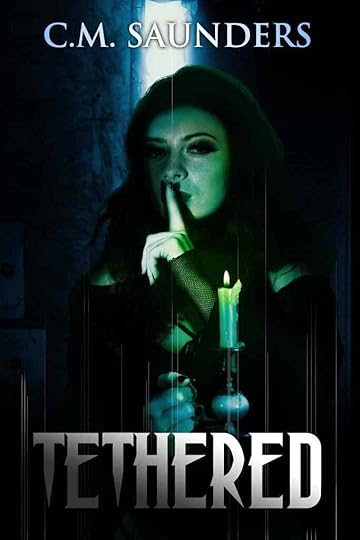
Many of the so-called Internet rituals described in the story are real. That’s not to say that they actually work. But they are ‘real’ in the sense that they have been written about and discussed extensively online. I changed a few crucial details in my descriptions, especially that of the Elevator Game. I’m not saying I’m a believer, but I don’t want it on my conscience if one of my readers tries one of these things and ends up in an alternate dimension or something. Lots of people have tried the Elevator Game, with mixed results. They usually end up disappointed. However, as alluded to in this book, it might be worth noting that if it actually worked, they probably wouldn’t be in a position to tell anyone about it.
The death of Elisa Lam in 2013 is often linked to the Elevator Game because of the genuinely unsettling surveillance footage which emerged of her acting strangely in an elevator. Her demise is still shrouded in mystery and often cited as one of the most bizarre deaths in recent years. Was it an accident? Murder? Suicide? Or something altogether stranger?
Nobody knows, and ultimately, that’s what makes it so chilling. The other cases mentioned of people being found dead in water tanks are also real, and I am sure there are lots more that haven’t been so widely publicized. The Cecil Hotel (since rebranded as Stay on Main) in Los Angeles is a place with a very weird history, and Richmond House is also an actual building in Southampton, albeit with a slightly more mundane background.
The summer of 2018 saw the arrival of a British reality TV show called The Circle, where a group of strangers were kept segregated and could only communicate with each other via a special social networking platform only they could access. One participant used his girlfriend’s pictures, and suckered everyone else into thinking he was someone he wasn’t. He won the first prize. I was fascinated by the way he manipulated the other players. It just goes to show that in an online world, you can be whoever you want to be. It also shows that even if there are red flags, the majority of people will ignore them and believe what they want to believe. I wanted to do something similar with the reader in Tethered. Anyone familiar with my work will know how much I love twist endings. I hoped to string you along for a while, feeding you just enough information so you think you know what will happen, and pull the rug out from under your feet. Then, just as you were getting your bearings, I wanted to do it again.
You may notice how integral the number 14 is to the plot. After setting sail from Southampton, a city integral to the plot of Tethered, the Titanic hit the iceberg on 14th April, the Cecil Hotel has 14 floors (Richmond House has only 13, I changed it for effect) my version of the Elevator Game has 14 steps, and both the serial killer Richard Ramirez and the ‘Man in Black’ from Tethered needed 14 victims. I thought this would be a bit more original than the usual 13. Regular readers of mine might also note that it fits in with one of my previous books, Apartment 14F. That story is about an English teacher living in China and realising his apartment is haunted. The Chinese take numerology very seriously. Every number is symbolic. Mainly because of the phonetic similarity when pronounced in Mandarin, the numbers ‘one’ and ‘four’ have come to signify loneliness and death, two predominant themes in both that book and Tethered.
Tethered is out now on paperback and ebook.
July 27, 2025
Pet Sematary Revisited
Knowing what a horror hound I am, last Halloween the book club at work asked me to recommend some suitable books for them to read. I’d previously been shocked at how few of them had ever read Sai King, and in a bid to remedy the situation recommended Pet Sematary. I’ve read it before, when I was a teenager, and wanted to see if my perceptions would be different now. When it first came out in 1983 I was barely even into double figures, and I didn’t even discover SK until my teens. This was probably one of the first of his books I ever read, if not THE first. I might have read it again at some point in the late nineties or early naughties but if I did, I can’t remember a lot about it. Not that that’s saying much. If you’d lived in nineties Britain, you’d know what I mean. This was the era of acid and Britpop.
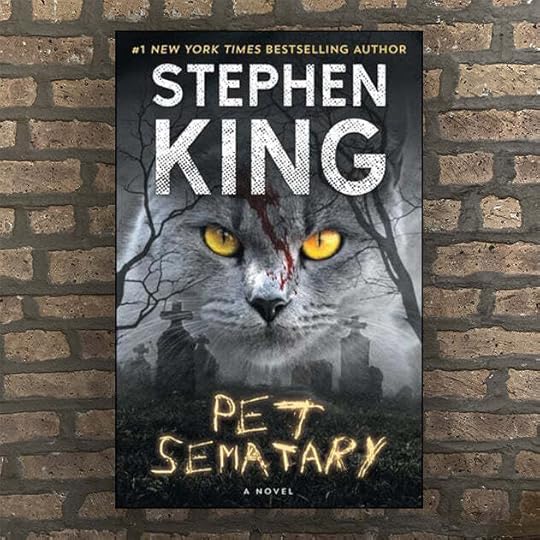
I find Stephen King really easy to read, you just sort of fall into the story, the characters are relatable and he doesn’t try to reinvent the wheel. You pick up one of his books and the next thing you know you’ve read 50 pages. Which is just as well, as he has a bit of a reputation for waffling. Even the waffle, though, is kinda comforting, it’s like listening to Uncle Albert talk about the war, and it all helps shape the characters and the setting. I think because I’ve read him so much, I find his writing style very familiar. I know every quirk and idiosyncrasy. It’s like meeting an old friend for a pint. I’ve been off gallivanting and meeting lots of new people over the past few years (by that I mean making an effort to read other writers) so it feels good to get back to what I know. Like coming home. The version I read this time, a reprint published in 2000, includes an introduction where he talks about writing the book and then being so horrified by it that he stuck it in a drawer and only got it out again years later when he needed to fulfil a contract with his then-publisher. They always say that you should avoid harming children and animals in books because readers don’t like it. In Pet Sematary there’s plenty of both, along with some elder abuse for good measure. Well, it isn’t abuse as such. Old people die in it. They get moidered. But that isn’t saying much because children also die, as do students, regular folk and animals. Everyone dies, which ties into the fundamentals of the book.
One thing more clear to me now is that Pet Sematary is essentially a study in mortality. It’s about death, and the flip-side of death, which is, of course, life. The thought processes and actions of main characters, all at different stages of life, reflect this, meaning for an interesting dynamic. We have Luis and Rachel, in their thirties, their young kids Ellie and Gage, and the older generation represented by Jud and Norma Crandall. An exchange between the three groups quite early in the book not only demonstrates King’s insightfulness but also sets the tone for what follows. It’s Halloween night, and shortly before poor Norma has her heart attack, she gives the trick-or-treating Ellie an apple, which she drops. Ellie then says she doesn’t want a bruised apple, and Luis scolds her for being impolite. Norma then turns the tables and scolds him, reminding him that ‘only children tell the whole truth,’ the implication being, of course, that adults don’t. Harsh truths, and how people deal with them (or don’t) are integral to the story. How a parent would feel about an outsider undermining him in front of his offspring is another sub-plot, tantalisingly unexplored by SK. In this instance, anyway.
Something else that took on added weight is Jud’s reasoning for taking Luis to the place beyond the Pet Sematary even though he knew Church the cat would come back changed. The assumption was at first that he had done it because he felt endebted to Louis for saving Norma’s life. Then, he said he did it to teach little Ellie that sometimes dead is better, before finally admitting that he did it because he wanted to share the secret he was privy to (“You make up reasons, they seem like good reasons, but mostly you do it because you want to”). He was compelled to share the secret. Whether this was a damning indictment of human nature (Don’t we all love to share secrets?) or whether there was something deeper at work, is left to the reader’s imagination. The implication is that the Pet Sematary itself somehow reached out and influenced events.
In the book club discussion, it was agreed that there are many different kinds of horror; there’s the supernatural kind, the evil that men (or women) do to each other, then there’s the kind where terrible shit just happens. Accidents, natural disasters, survival situations, that kind of thing. It’s all horrific. Though Pet Sematary definitely has supernatural elements, given the prophetic dreams, the Indian burial ground, and people coming back from the dead, it’s more about that last category. It’s about the fragility of life, and how it likes to kick you in the arse every now and again. There are lessons to be found in this book, lessons that went completely over my head when I read it the first time. One more thing that has more resonance now is when Louis Creed quotes the Ramones’ Blitzkrieg Bop (“Hey ho, let’s go!”), which he does numerous times throughout the book. It makes you wonder whether they were being earmarked to do the soundtrack even while SK was writing the book, or whether that line was inserted later as one of his infamous Easter eggs.
Since editing other people’s work has been part of my day job I have become hypersensitive to bad habits. After a while, they stand out a mile. One of my pet hates is repetition, where writers use the same word, or words, repeatedly. I never noticed it with SK before, but in Pet Sematary a lot of people laugh until they cry. In the first half, anyway. There isn’t too much laughing in the second half. There’s a section around the midway point where it’s all happy families and Gage and Louis are flying a kite (Flyne, Daddy!) and even if you haven’t read it before you just know SK is setting you up for something. And when it hits, its brutal, man. BROO-TAL.
In the aftermath, the same suggestion that the Pet Sematary, or, more precisely, the Micmac burial ground that lies beyond it, might have the power to influence outside events to its liking is made again when the driver responsible for the carnage admits being clean and sober at the time of the accident, but was speeding because, “When he got to Ludlow he just felt like putting the pedal to the metal. He said he didn’t even know why.”
At its core, Pet Sematary raises an interesting ethical dilemma; if one of your loved ones died and you had the ability to bring them back, even though you knew they might come back changed, would you still do it?
Let’s face it, most of us probably would.
Like all of us, Louis Creed is deeply flawed. He is a weak man, though at the same time strong. He knows right from wrong, and he knows where the line is. But he is more than prepared to cross it, ostensibly to serve and protect his family. But dig a little deeper (pun intended) and you can see his actions are driven by selfishness rather than selflessness. He just wants things back the way they were because he preferred them that way.
I think sometimes we all kid ourselves that the things we do are for other people’s benefit when in reality we do it meet our own needs. Take, for example, people who donate their time or money to charity. Good on them, right? But ask yourself, do they really care about that particular charity? Or are they donating just because it makes them feel good? You might argue that it doesn’t matter. But if you value honesty and integrity, maybe it does. Of course, the other option is that Louis really had no choice in proceedings. He was always going to do what he did because that was what the force connected to the Pet Sematary/Micmac burial ground wanted him to do.
I can confirm that even after repeated readings, and even when you know it’s coming, that ending still packs a wallop.
July 17, 2025
Collection in Person at the Clubhouse
My latest short story, Collection in Person, is included in the anthology Clubhouse 3 on 13 Days Publishing. As the cover blurb says: “The tales in The Clubhouse 3 aren’t just of the bump in the night variety but also those that shriek into the daylight and paint the bright, bustling world in wet crimson.”
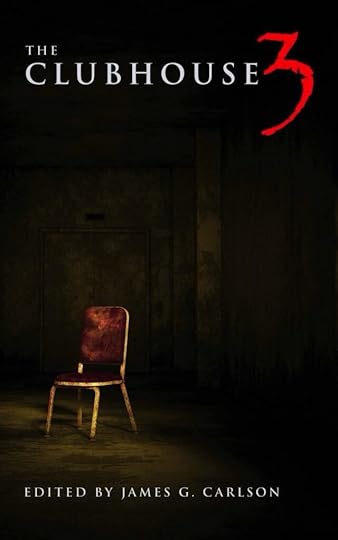
Collection in Person, about the downside of selling stuff on eBay is, by my count, my 98th published short story. It has heavy American Psycho vibes, and is probably one of the very few horror stories that features a guest appearance by Bruce Springsteen.
NB: Don’t worry, Tramps. No Springsteens were hurt in the writing of this story.
Clubhouse 3 is out now.
July 12, 2025
Blood Lake cover reveal
Saddle up! Dylan Decker is ready to ride again, and you’ve been invited. Blood Lake follows him as he journeys east after the horrific events at Silent Mine, and encounters a creature unlike anything he has ever faced before.
Check out the awesome cover art by Rebecca Cuthbert.

Pre-orders are available now on the Undertaker Books website.
June 28, 2025
Tethered is out now!
Craig, a journalism graduate trying desperately to get a foothold in a fading industry, is going nowhere fast. While searching for a project to occupy himself, he stumbles across a blog written by a girl called Kami about internet rituals – challenges undertaken by those seeking to make contact with ghosts or other supernatural entities.
Craig becomes obsessed, and when Kami suddenly disappears he goes in search of her. From there he is powerless to prevent his life spiralling out of control as he is drawn deeper and deeper into a dark, dangerous world where nothing is quite what it seems, a world populated not just by urban myths and hearsay, but by real-life killers.
He thinks he is in control, but nothing can be further from the truth.
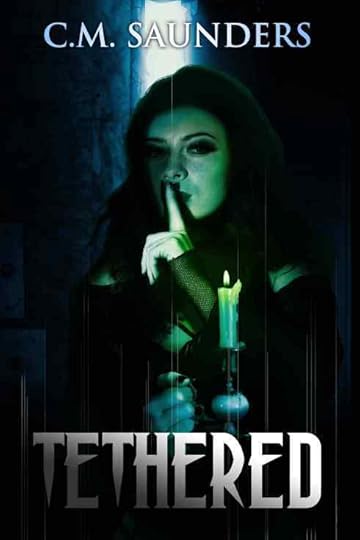
I was talking to a publisher about a different project when they said, “Aren’t you the guy who once write a book about Elisa Lam and the Cecil Hotel? What happened to that?”
They were referring to Tethered, a novella published a few years ago through a small press. And what happened to it was, the small press that published it went under, taking Tethered with it. Since then it was one of those things I kept meaning to go back to but never did. There was always something more important to do. As it had already been published I thought my only option would be to self-publish it, and that’s a giant pain in the ass. So it it sat gathering virtual dust on my hard drive until 13 Days Publishing came calling and asked if I wanted to re-publish it through them. Hell yeah, I did! And here we are. A slightly edited and updated version of Tethered, with stunning new cover art by Eric Ashmore.
This also marks my first release on Godless (an independent, horror-focused alternative publishing platform to KDP).
Intrigued yet?



